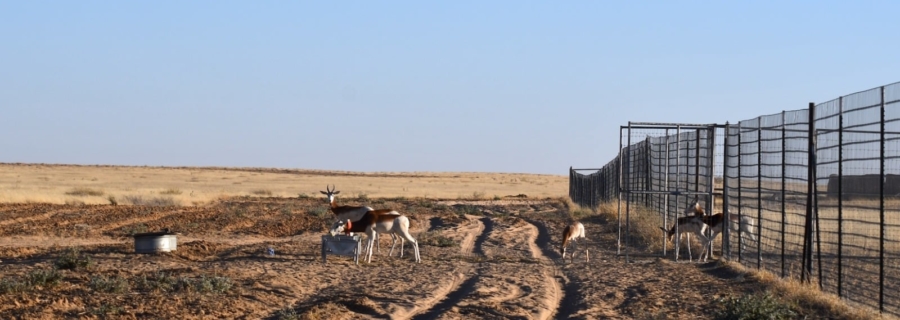Releasing collared dama gazelles!
Chad, Tuesday 23rd January 2023: Yesterday saw another conservation first for Chad’s Ouadi Rimé Ouadi Achim Faunal Reserve, when six dama gazelles were released into the wild. The animals, partly local and partly captive-bred from local stock, are part of an ambitious initiative to boost the numbers of the wild population.

One of the three most endangered antelope species in the world, with around only 100 individuals remaining in the wild in Chad and Niger, the dama gazelle is on the brink of extinction and considerable conservation efforts are being undertaken to prevent this.
To follow the gazelles’ movements and to monitor their absorption into the reserve’s wild population of around 50 animals, three of them have been fitted with GPS tracking devices by a joint team from Sahara Conservation, the Environment Agency – Abu Dhabi, the Smithsonian’s National Zoo and Conservation Biology Institute and the Zoological Society of London. This is the first-time dama gazelles from a captive breeding group managed in the Ouadi Rimé – Ouadi Achim Faunal Reserve (OROAFR) have been collared.
To strengthen the dama population in Chad and following the recommendations of the 2019 – 2028 regional dama gazelle conservation strategy, Sahara Conservation and its partners started a small captive breeding program in the reserve in 2020. An initial capture of five dama gazelles in the Manga region of Chad, several passive captures in OROAFR, a translocation of five gazelles from the Environment Agency – Abu Dhabi, and several births have resulted in a group of 29 dama gazelles to date!
The OROAFR was identified as the most suitable site for population reinforcement, due to its protected status, the large amount of suitable habitat available, and the availability of animal management infrastructure from ongoing reintroductions of scimitar-horned oryx and addax.
Post-release monitoring of the satellite-tagged gazelles will help provide detailed information on reproduction, survival and mortality of wild dama gazelles in the reserve. It also offers a unique opportunity to monitor wild dama in the OROAFR more closely, and the potential to identify factors limiting population growth. In the longer term it will support the conservation and growth of the remaining subpopulations.


